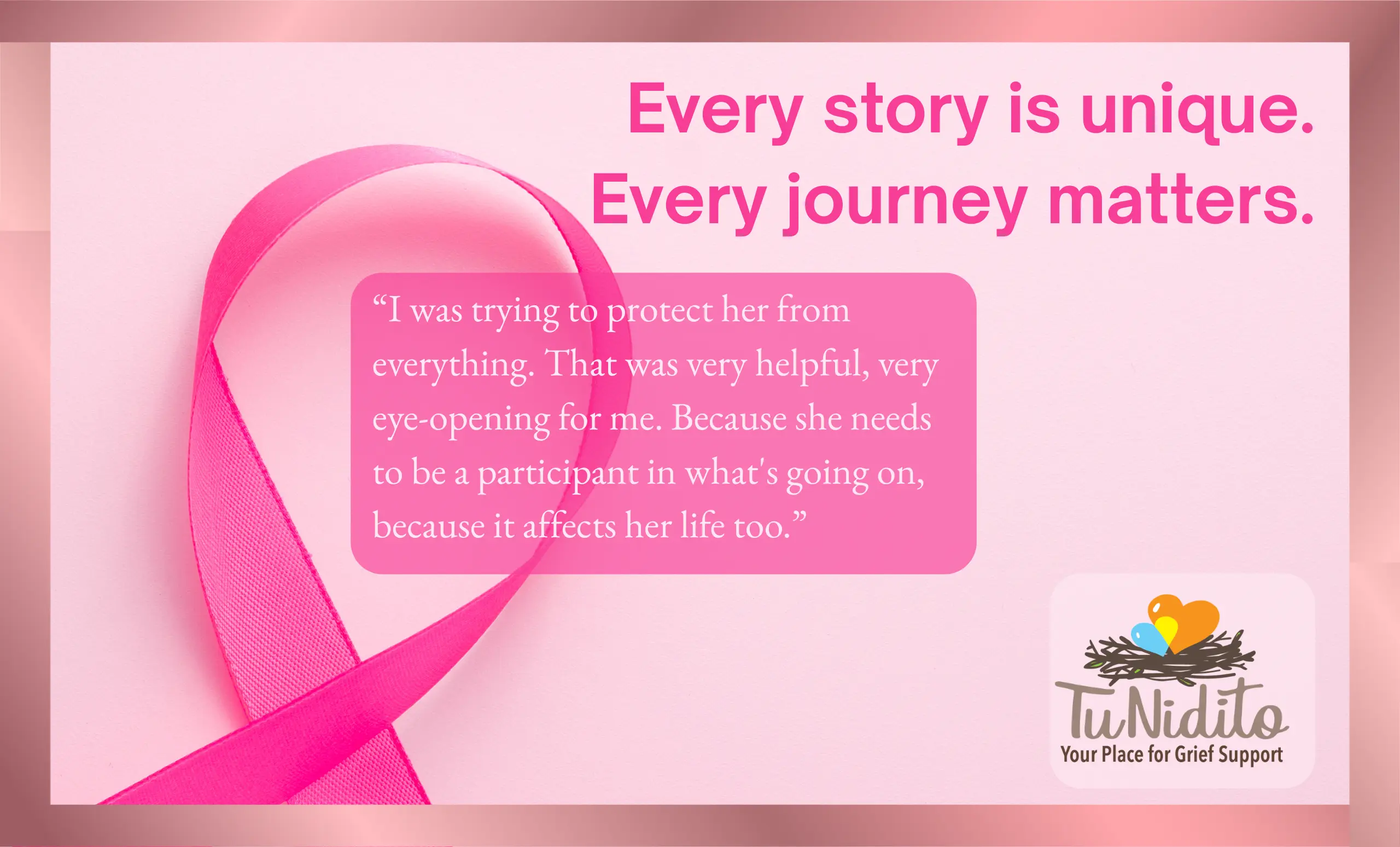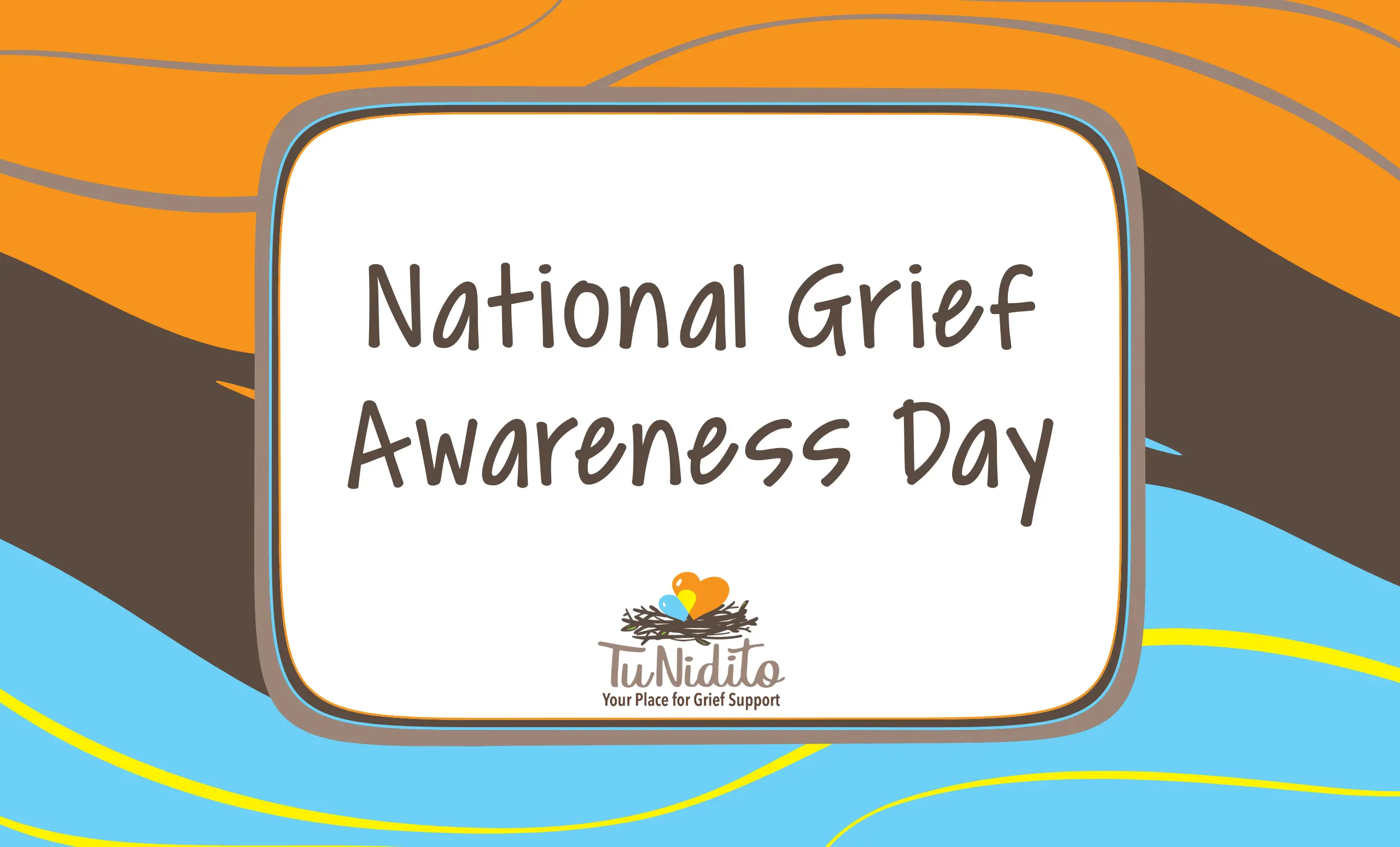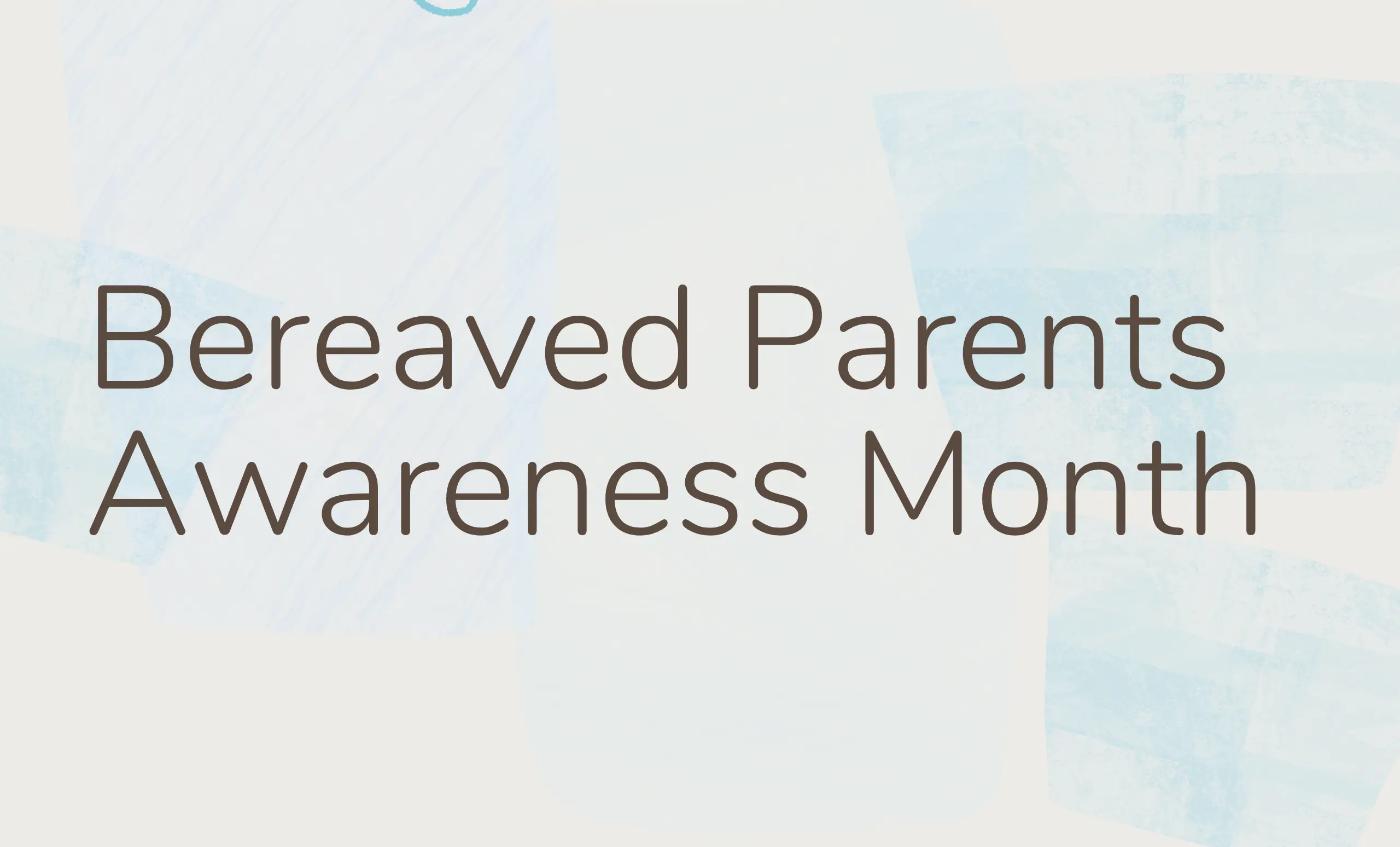Peer-To-Peer Support
Programs for families grieving the death of a loved one or a caregiver’s serious medical diagnosis
Why split up families into peer groups?
At Tu Nidito, we offer two types of support groups:
- For families who are grieving the death of a special person
- For families when a parent or adult caregiver has been diagnosed with a serious medical condition.
In both of these support groups, we provide age-appropriate emotional support that meets the developmental needs of participants. We achieve this by dividing families into four separate sub-groups: Littles (ages 3.5 to 7), Middles (ages 8 to 12) Teens (ages 13 to 18) and Adults (parents and caregivers).
Who is a Group Coordinator?
Tu Nidito groups are run by staff members called Group Coordinators. We have four Group Coordinators on staff: Brigid, Diana, Kristin, and Serena. In addition to providing emotional support and community resources to families both during and outside of group nights, Group Coordinators also handle group logistics and oversee the volunteer facilitators.
Who facilitates the groups?
Facilitators are a very important part of Tu Nidito groups. They are trained volunteers and assigned to an age group so they can work directly with the children and adults. With the support of the Group Coordinator, they lead each part of the group evening: the rules, check-in, talking circle question, activity and closing. Our facilitators are made up of undergraduate students, young professionals, and retirees.
What are the group rules?
Group Rules are a way for our group members to feel comfortable and safe. The rules are a bit different for each age group, but here are some of our important ones:
- The “I Pass” Rule: You can always say “I Pass” if you are called on to share and you do not want to or are not ready.
- Confidentiality: Anything you or anyone else says in group will remain private, unless there is concern of harm to yourself or others.
- Talking Stick Rule, or “Taking Turns” Rule: Everyone will have an opportunity to share, uninterrupted.
- Comparing Losses Rule: Everyone’s loss and experience with grief is different, therefore participants will not compare their grief or loss with someone else’s.
- Advice Rule: We ask that each participant refrain from giving advice to their fellow group members, unless that person explicitly asks for advice.
How does a group begin?
Each night, we start our group with a check-in once we are in our Talking Circle Room. We do this with all age groups.
For bereavement support groups, participants say:
-
Their name
-
The name of their special person or people who died
-
How they died
-
How they are feeling that night
-
Their name
-
The name of their family member with a serious diagnosis
-
What the diagnosis is
-
How they are feeling that night
During our groups, we utilize reflective listening, giving the person who is sharing the comfort of knowing they are been heard.
In the past, we used a Talking Stick that we would pass around the room, giving each person the opportunity to do their check-in. During Zoom groups, each person is called by name when it’s their turn to talk.
What is a Talking Circle Question?
An example of a Talking Circle Question in our Littles group might be:
What do you wish you could say to your special person?
A Teen question might be:
Who told you when your special person died? Did someone provide comfort to you at that time?
The questions provide a path for everyone to feel safe in exploring their feelings and finding common ground with others.
Adults also have their own Talking Circle Question and discuss what their children are being asked so that they can continue talking about the subject as a family if they wish.
What sorts of activities do you do during group?
There are many important things we can do when we are grieving or experiencing the impacts of a diagnosis. At Tu Nidito we might draw or sketch images of our feelings, write letters to the person who died, or to the serious medical condition itself. We read books and play games to have fun and feel validated. We learn coping skills to calm our bodies and minds, such as deep breathing. Every group is something different, which means there’s always something new to do!
How does a group night end?
At the end of each group night, we will take a few moments to honor and celebrate any birthdays, death anniversaries, or other special days that might be coming up. Afterwards, we typically hold hands and pass around a “love squeeze” as a way for everyone to take home all of the love, comfort, hope, and support that they received from each other that night.
Since we now meet on Zoom, everyone puts their hand up towards their camera and on the count of three, we all squeeze our hands into fists and say “I got it,” signifying that each person “got” all that love and warmth. This tides us over until the next time we get to meet again.


Related Posts
Honoring Breast Cancer Awareness: “Every story is unique, every journey matters” As we close out 2025 Breast Cancer Awareness Month, we are highlighting our [...]
On August 30th, we recognize National Grief Awareness Day, a day dedicated to acknowledging and inviting opportunity to speak openly and honestly about, what [...]
July is Bereaved Parents Awareness Month. It's a time to acknowledge and support parents who have experienced the death of a child and raise [...]




